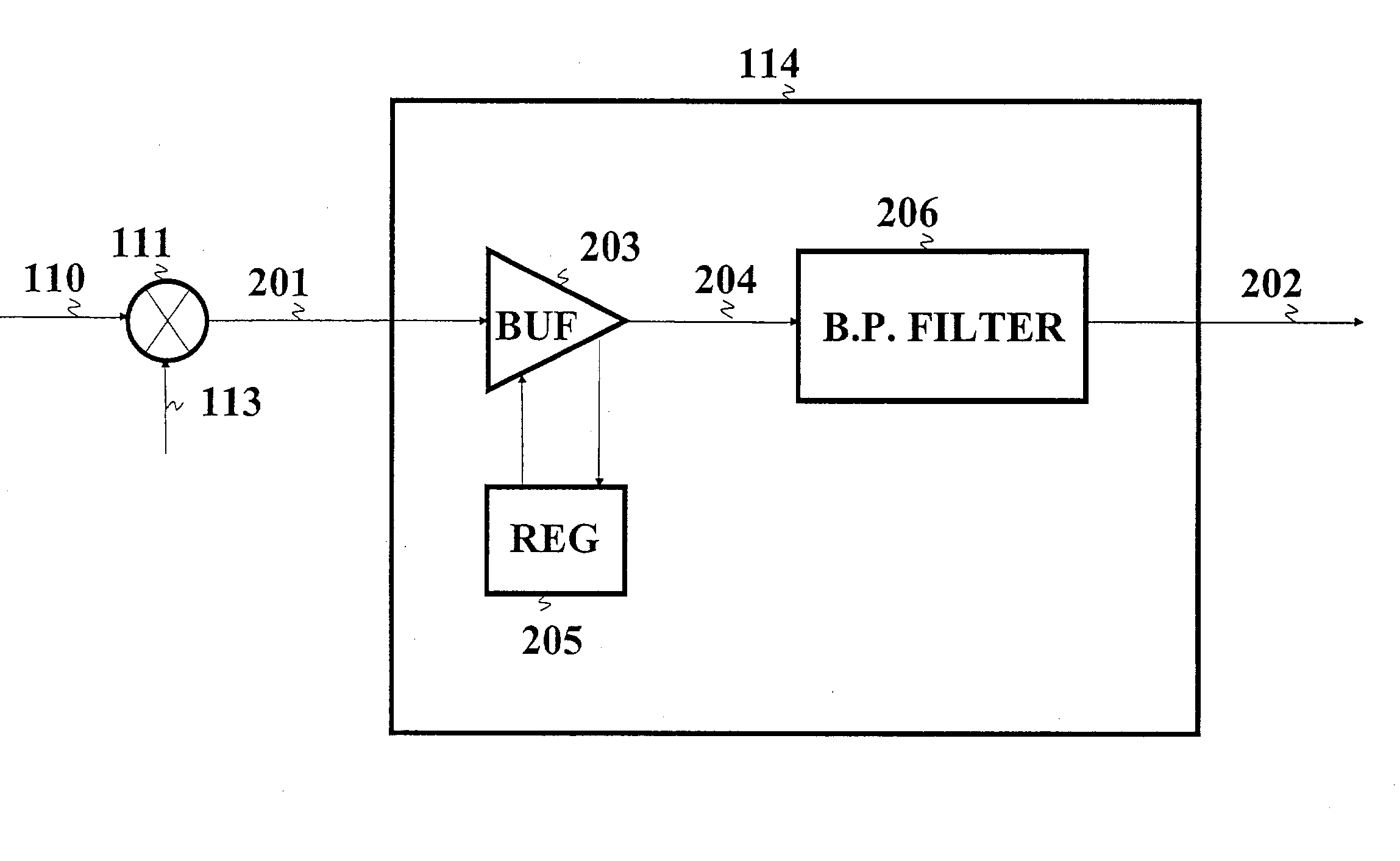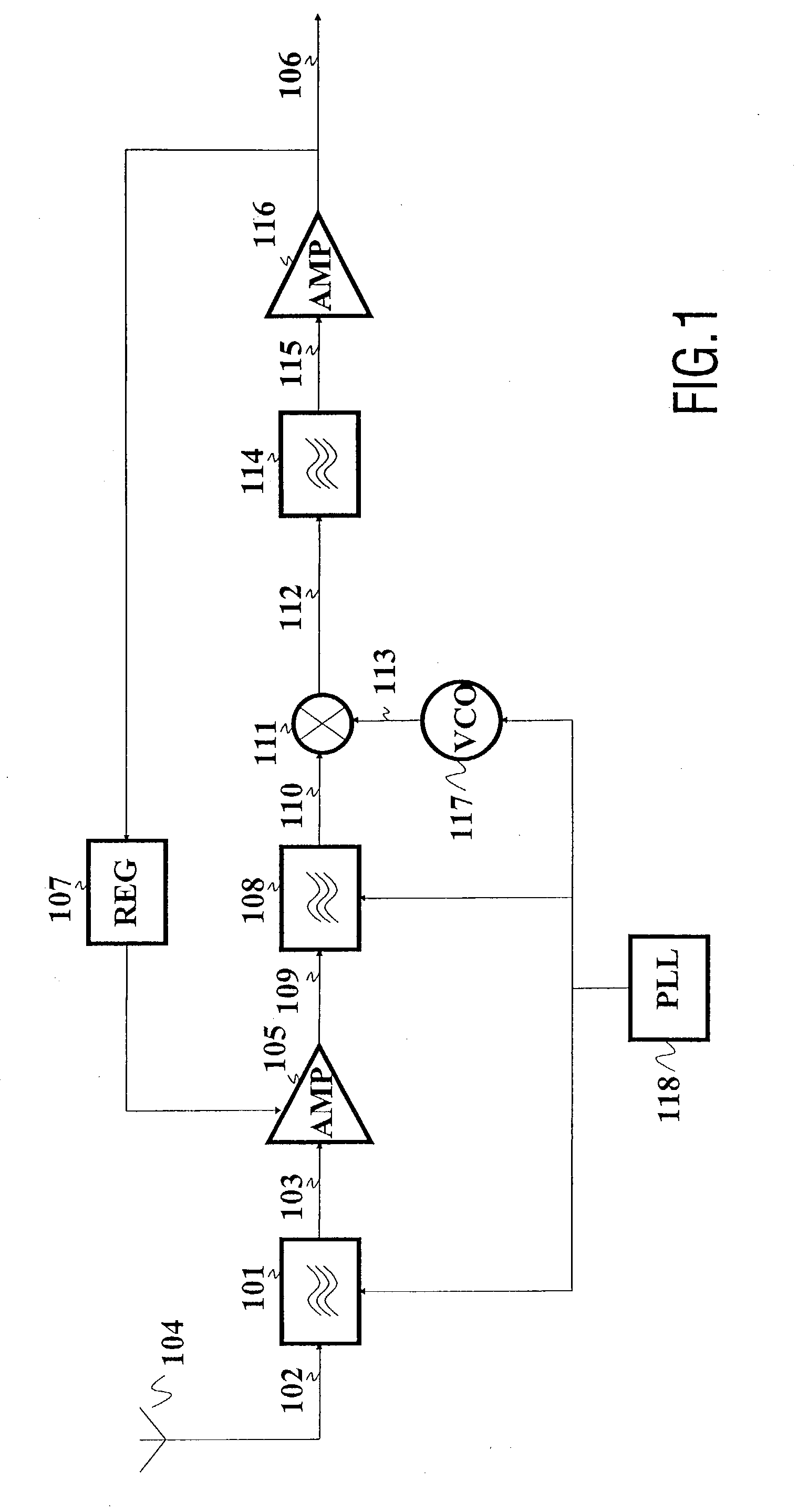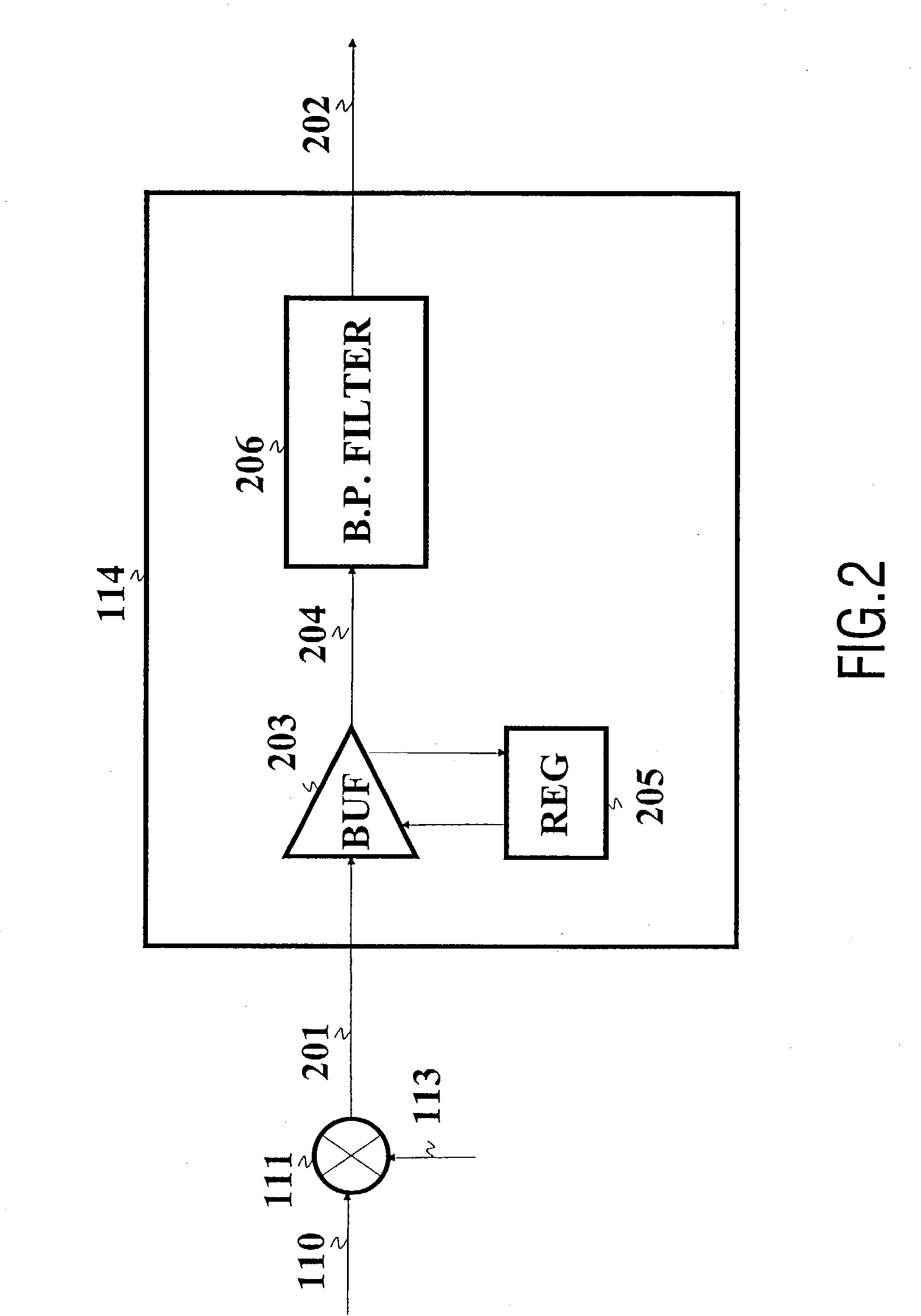Tuner comprising a selective filter
a filter and selective technology, applied in the field of tuning, can solve the problems of insufficient selectivity of filtering means, inability to accurately select a particular channel, and limitations of selective filtering means, so as to improve selectivity and linearity.
- Summary
- Abstract
- Description
- Claims
- Application Information
AI Technical Summary
Benefits of technology
Problems solved by technology
Method used
Image
Examples
first embodiment
[0036] FIG. 3 shows the processing means according to the invention for filtering a first IF signal 301 and supplying a second IF output signal 302.
[0037] In so far as the signal 301 is a differential signal without reference to a particular potential, the input of the voltage follower circuit is constituted by the bases of two transistors T1 and T2. The transistors T1 and T2 are arranged in an emitter follower configuration for supplying a differential signal 303 of a low impedance via their emitters. The emitters of the transistors T1 and T2 are connected to variable current sources 304 and 305 which allow supply of an emitter current of a constant value regardless of the input impedance variations of the double resonance frequency filter 206 receiving said differential signal 303. To ensure this current control, the current sources 304 and 305 are associated with control means described hereinafter.
[0038] The double resonance frequency filter 206 is constituted by a first and a s...
second embodiment
[0043] FIG. 4 describes the processing means according to the invention for filtering a first IF signal 301 and supplying a second IF output signal 302.
[0044] This embodiment differs from that in FIG. 3 in that the capacitive coupling of said first and second resonant circuits is constituted by the series arrangement of capacitors C5-C6 and whose central point is connected to ground. This configuration of the capacitive coupling allows an improvement of the common-mode rejection of the signal 303 to be filtered.
[0045] As mentioned hereinbefore, the voltage follower circuit is associated with control means for maintaining the bias current in the elements constituting said circuit at a constant value. As is illustrated in FIG. 7, the input impedance Ze of the double resonance frequency filter 206 has a considerable variation in the frequency interval [f1,f2], i.e. in the selective zone of the filter. Indeed, the input impedance of the filter takes low values for frequencies which are ...
PUM
 Login to View More
Login to View More Abstract
Description
Claims
Application Information
 Login to View More
Login to View More - R&D
- Intellectual Property
- Life Sciences
- Materials
- Tech Scout
- Unparalleled Data Quality
- Higher Quality Content
- 60% Fewer Hallucinations
Browse by: Latest US Patents, China's latest patents, Technical Efficacy Thesaurus, Application Domain, Technology Topic, Popular Technical Reports.
© 2025 PatSnap. All rights reserved.Legal|Privacy policy|Modern Slavery Act Transparency Statement|Sitemap|About US| Contact US: help@patsnap.com



